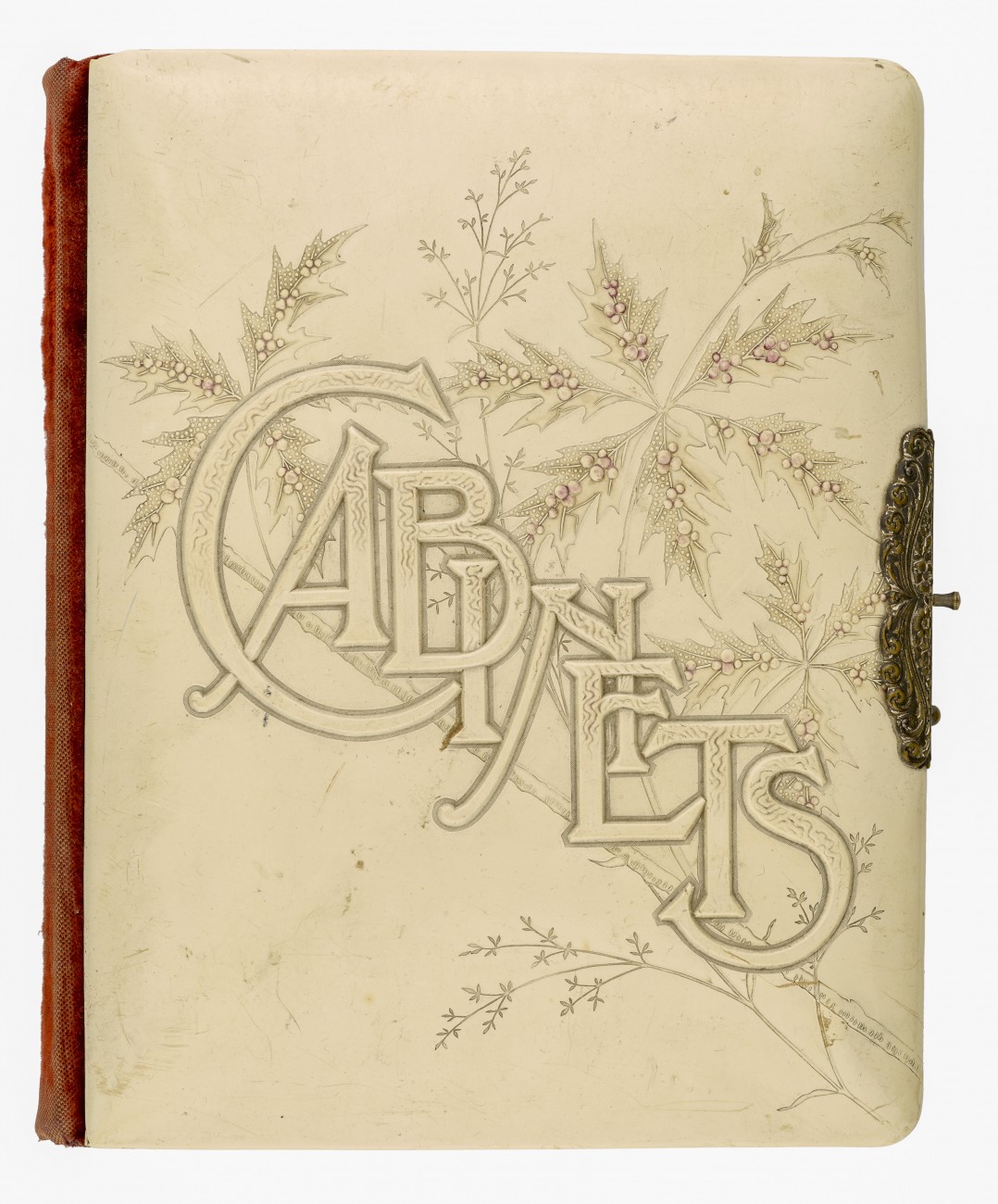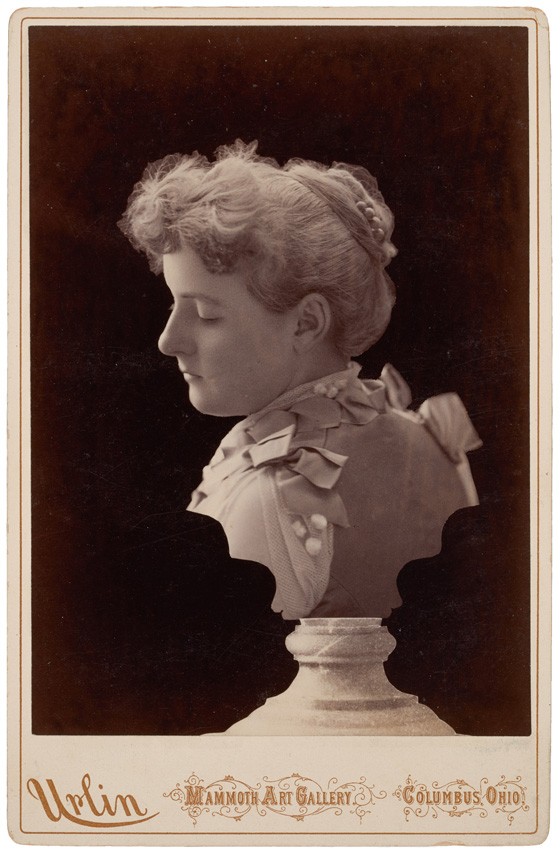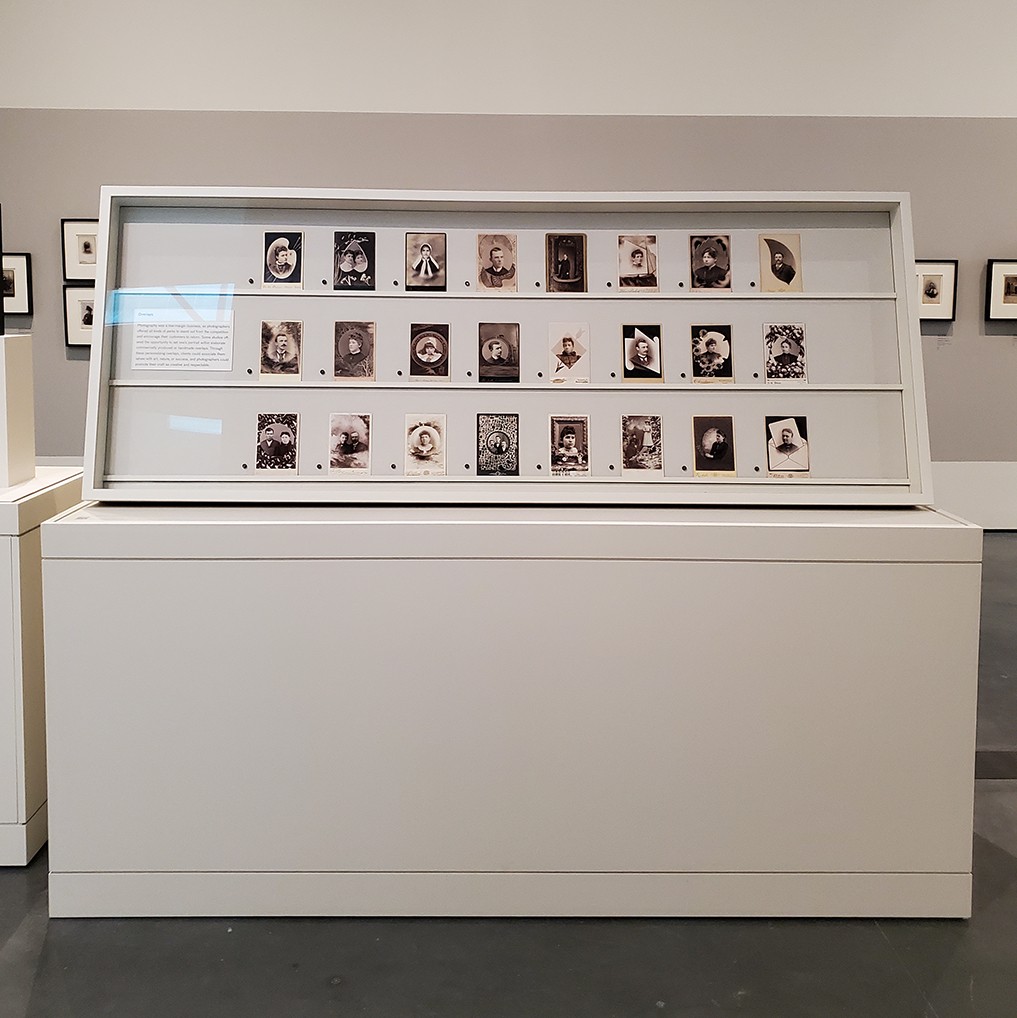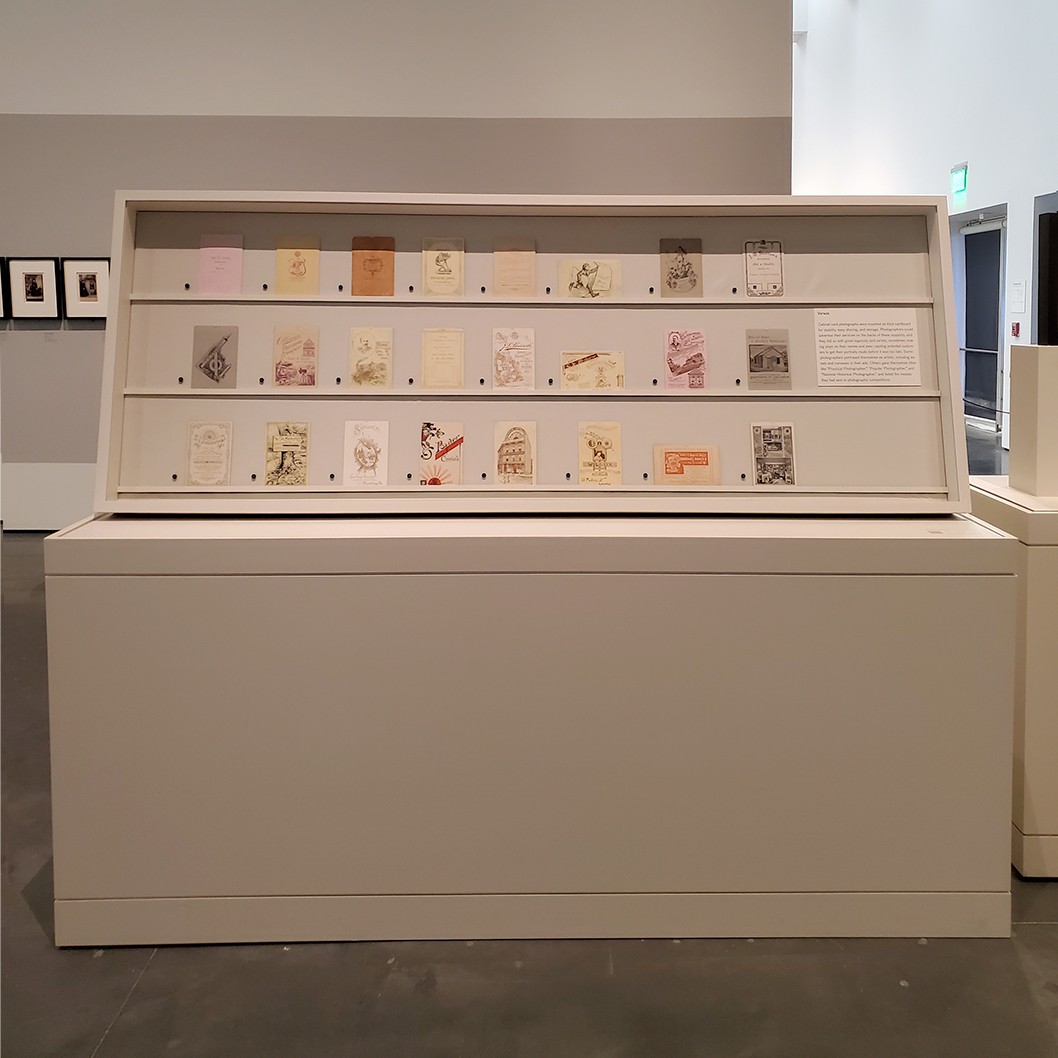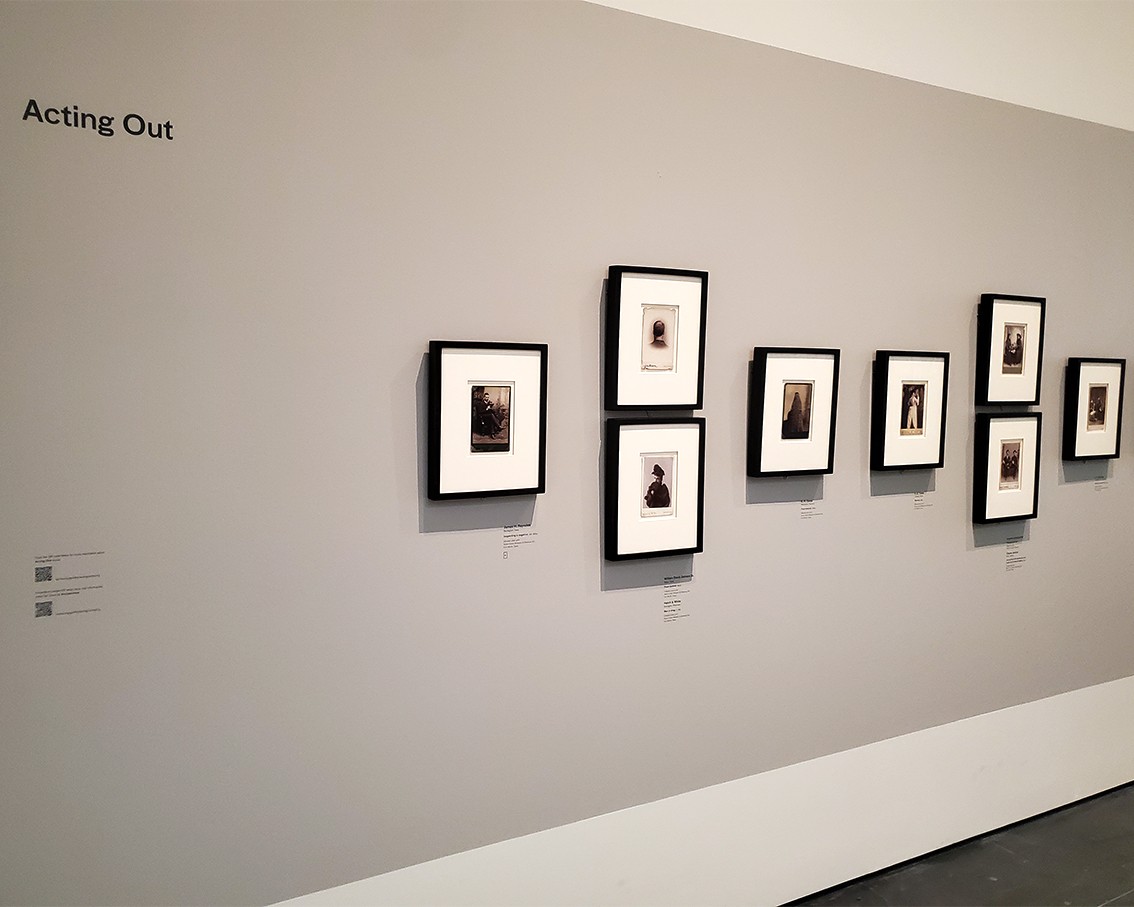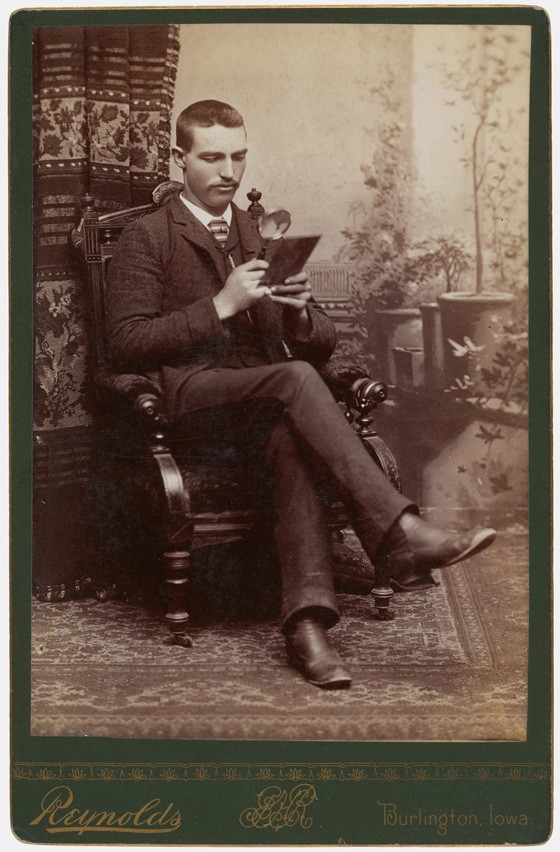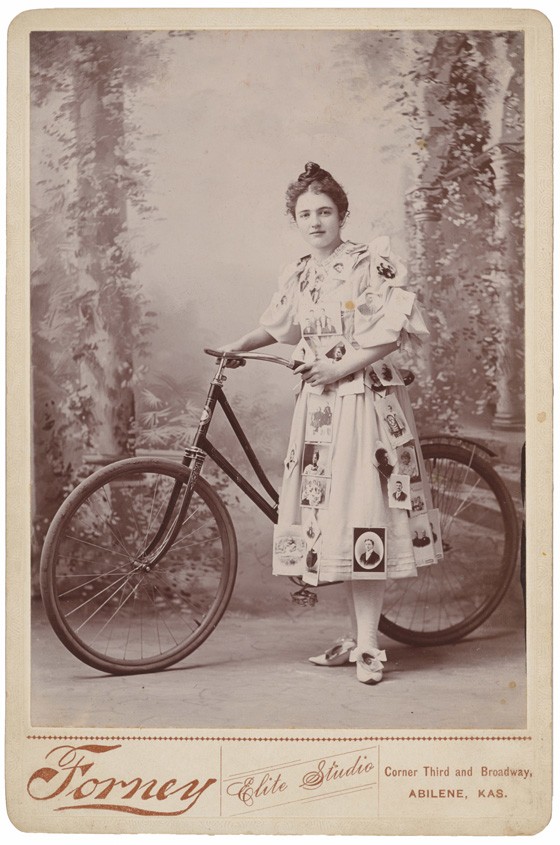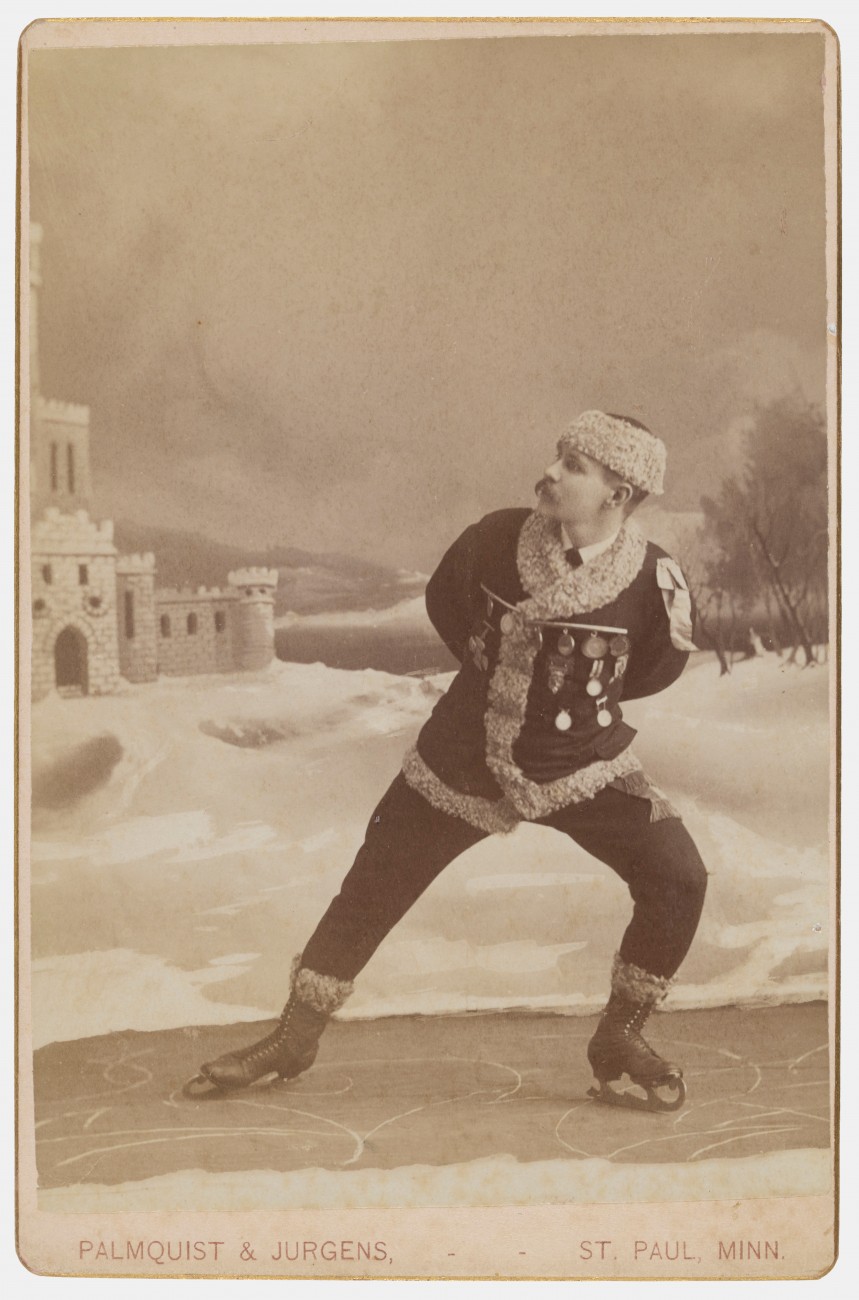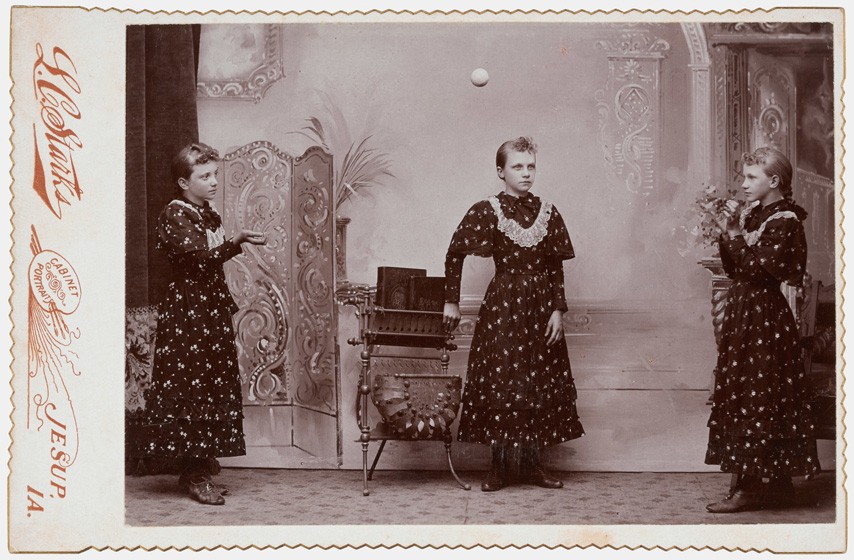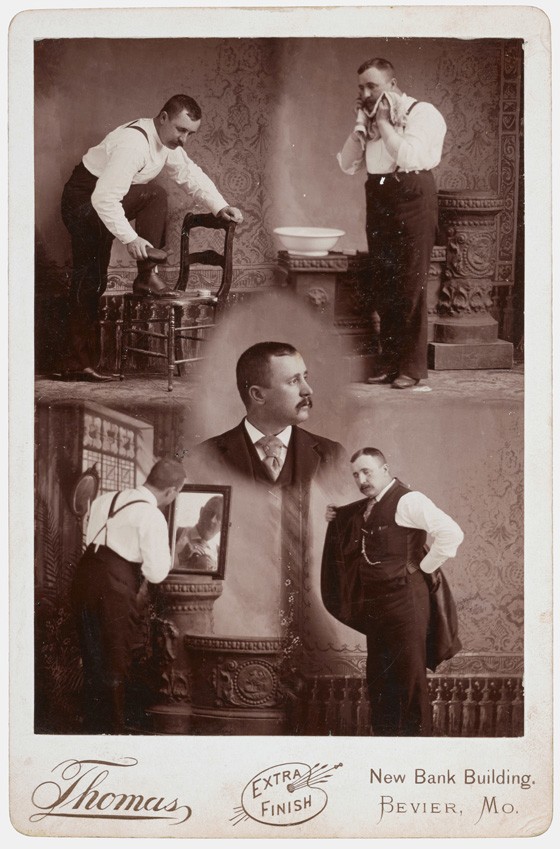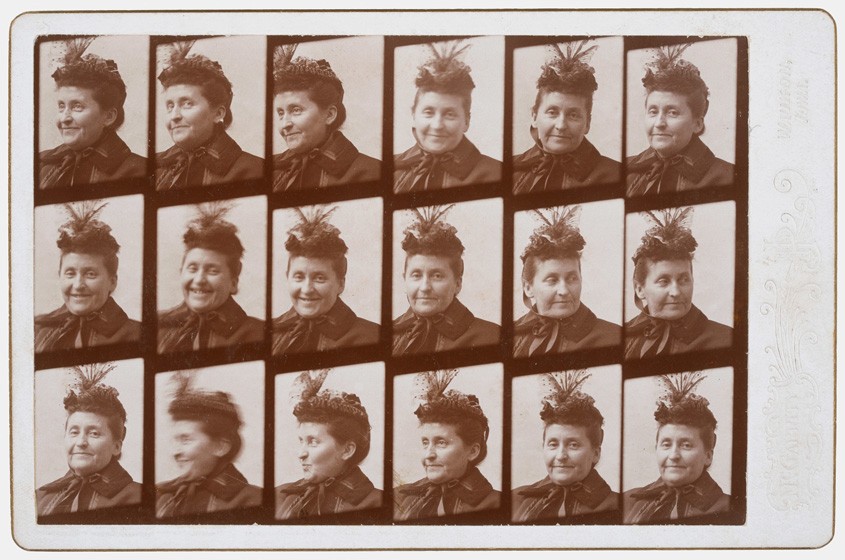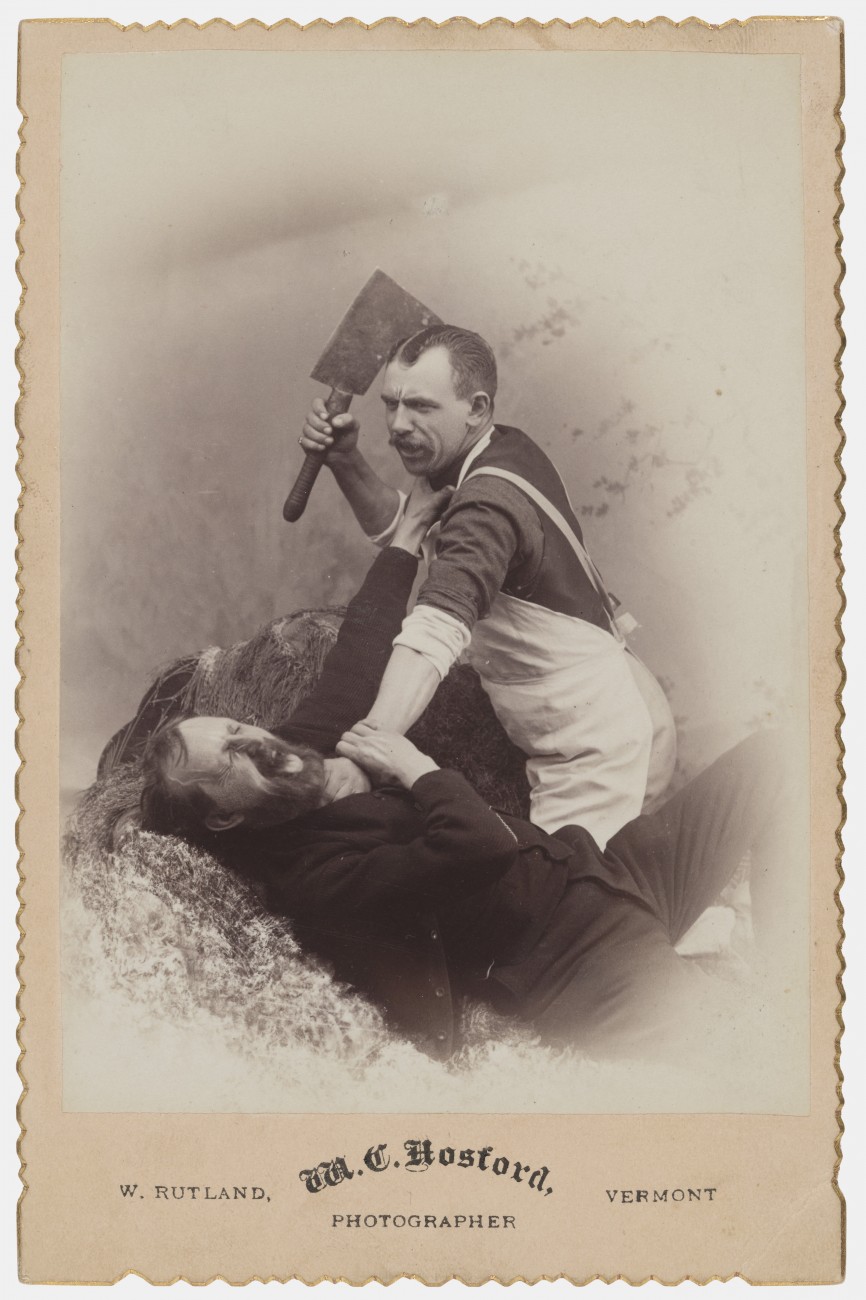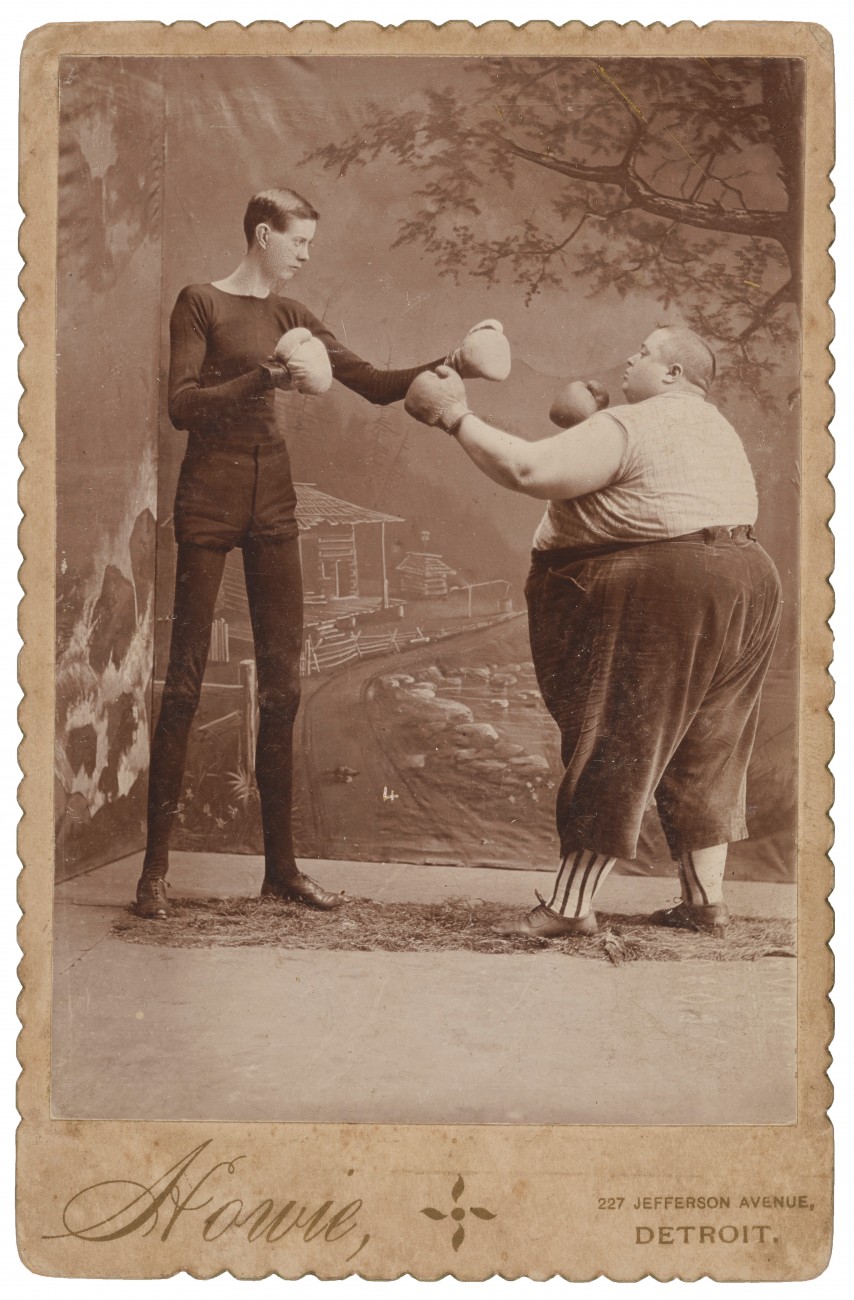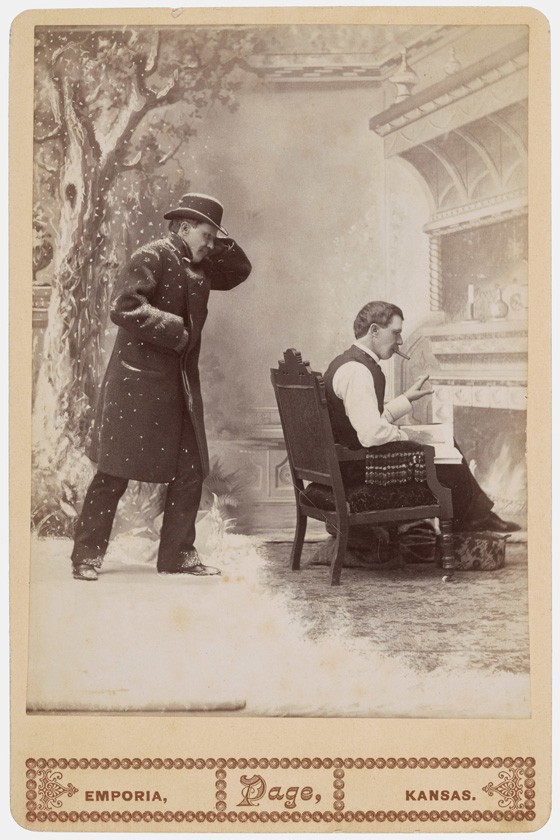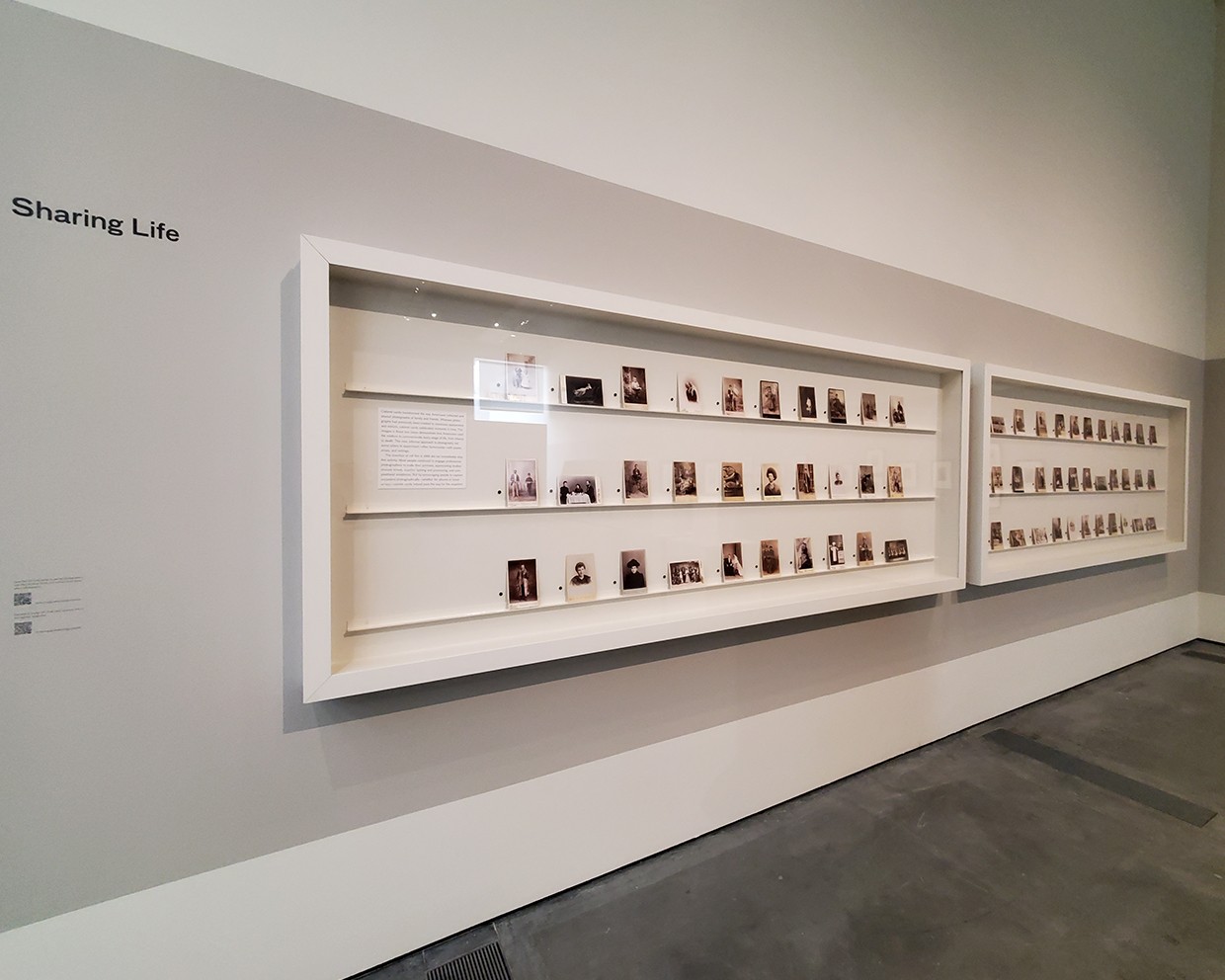|
1
|
Charles L. Griffin, Scranton, Pennsylvania
Toddler with dog, c. 1892
Gelatin silver print
Amon Carter Museum of American Art, Fort Worth, Texas
The introduction of faster film emulsions and electric light in the 1890s made it easier to photograph toddlers and pets, leading to a fad for light-filled cards like this one.
|
|
2
|
William A. Fermann, Stoughton, Wisconsin
Baby, c. 1888
Albumen silver print
Amon Carter Museum of American Art, Fort Worth, Texas
|
|
3
|
W. A. Wilcoxon, Bonaparte, Iowa
Baby, 1890s
Collodion silver print
Amon Carter Museum of American Art, Fort Worth, Texas
The mass production of consumer goods in the late nineteenth century led to a broad expansion of the middle class and a related desire to show off the trappings of economic comfort. Here, a baby is photographed sitting on a scale rather than in its mother’s lap.
|
|
4
|
Julius Caesar Strauss, St. Louis, Missouri
Man with baby, 1892
Collodion silver print
Amon Carter Museum of American Art, Fort Worth, Texas
|
|
5
|
W. A. White, Wilson, Kansas
My First Baby Friend Tompie and His Pet, 1896
Collodion silver print
Robert E. Jackson Collection
|
|
6
|
William Henry Cobb, Albuquerque, New Mexico
Toddler, c. 1890
Collodion silver print
Amon Carter Museum of American Art, Fort Worth, Texas
|
|
7
|
Morrill [and] Lowell
Three-and-a-half-year-old girl, n.d.
Albumen silver print
William L. Schaeffer Collection
|
|
8
|
Samuel Logan, Fargo, Dakota Territory
Willie Poten, 1880s
Albumen silver print
Amon Carter Museum of American Art, Fort Worth, Texas
|
|
9
|
C. H. Wareham, Freeport, Illinois
Boy, 1890s
Collodion silver print
Amon Carter Museum of American Art, Fort Worth, Texas
|
|
10
|
Halsted and Kehm, Sioux Falls, South Dakota
Sisters sharing photographs, late 1880s
Gelatin silver print
Amon Carter Museum of American Art, Fort Worth, Texas
These two girls humor the photographer as they pretend to look through cabinet cards that presumably show their family and friends.
|
|
11
|
F. J. Nelson, Anoka and Lindstrom, Minnesota
Catch of Seth Owens, July 25, 1894
Collodion silver print
Amon Carter Museum of American Art, Fort Worth, Texas
|
|
12
|
McLain, El Dorado, Kansas
Family meal, 1890s
Collodion silver print
Amon Carter Museum of American Art, Fort Worth, Texas
|
|
13
|
W. O. Towns, Lewistown, Pennsylvania
Boy in wheelchair, 1890s
Collodion silver print
Amon Carter Museum of American Art, Fort Worth, Texas
|
|
14
|
H. L. Austin, Berlin, New York
Family dog, late 1880s
Albumen silver print
Amon Carter Museum of American Art, Fort Worth, Texas
It was not unusual for people to commission portraits of their pets, but the dog in this image appears particularly pampered: sprawled across a settee before a country lane backdrop, the pet seems to radiate a life of comfort, economic well-being, and leisure.
|
|
15
|
A. M. Nikodem, Chicago, Illinois
Cat, 1880s
Albumen silver print
Robert E. Jackson Collection
|
|
16
|
G. Mandeville, Lowville, New York
Man, 1880s
Albumen silver print
Amon Carter Museum of American Art, Fort Worth, Texas
|
|
17
|
Perry Daniel Werts, Iowa City, Iowa
Graduate, c. 1900
Collodion silver print
Amon Carter Museum of American Art, Fort Worth, Texas
Cabinet cards documented all stages of life, creating a linearity of existence that paved the way for twentieth-century snapshot albums. This woman’s pose reflects the rise of educational opportunities for women.
|
|
18
|
C. H. Wareham, Freeport, Illinois
Blind woman, 1890s
Collodion silver print
Amon Carter Museum of American Art, Fort Worth, Texas
|
|
19
|
T. J. Grigsen, Terre Haute, Indiana
Family, 1890s
Gelatin silver print
Amon Carter Museum of American Art, Fort Worth, Texas
Americans’ embrace of cabinet cards in the late nineteenth century coincided with an increasing idealization of home and childhood. This family has chosen to display their domestic harmony by photographing their children and dog.
|
|
20
|
George W. Parsons, Pawhuska, Oklahoma Territory
Ni Wala, c. 1890
Collodion silver print
Amon Carter Museum of American Art, Fort Worth, Texas
|
|
21
|
Morris, Oxford, Nebraska
Man, c. 1900
Gelatin silver print
Amon Carter Museum of American Art, Fort Worth, Texas, gift of Robert E. Jackson
|
|
22
|
Mills, Middletown, New York
Woman, c. 1890
Collodion silver print
Robert E. Jackson Collection
Though informality was widely accepted in photographic portraiture by 1890, sitters rarely smiled for the camera. This photographer may have used electric light to cut the exposure to a second or so, then coaxed this woman into presenting a relaxed demeanor.
|
|
23
|
Woodhead & Wood, Farmington, New Hampshire
Woman, c. 1885
Albumen silver print
Amon Carter Museum of American Art, Fort Worth, Texas
|
|
24
|
Thomas Lenhart, Allentown, Pennsylvania
Wedding party, c. 1896
Gelatin silver print
Amon Carter Museum of American Art, Fort Worth, Texas
|
|
25
|
L. M. Melander & Brothers, Chicago, Illinois
Wedding portrait, c. 1890
Collodion silver print
Amon Carter Museum of American Art, Fort Worth, Texas
|
|
26
|
J. Katdy, Pomona, California
Friends, 1880s
Albumen silver print
Amon Carter Museum of American Art, Fort Worth, Texas
|
|
27
|
D. D. Upson, Hampton, Iowa
Two women, 1880s
Collodion silver print
Amon Carter Museum of American Art, Fort Worth, Texas, gift of Robert E. Jackson
|
|
28
|
F. J. Nelson, Anoka, Minnesota
Domestic Bread, 1890s
Collodion silver print
Amon Carter Museum of American Art, Fort Worth, Texas
|
|
29
|
O’Neil, New Bedford, Massachusetts
Postman, late 1880s
Albumen silver print
Amon Carter Museum of American Art, Fort Worth, Texas, gift of Robert E. Jackson
|
|
30
|
J. S. Fonfara, Chicopee Falls, Massachusetts
Waitresses, c. 1890
Gelatin silver print
Amon Carter Museum of American Art, Fort Worth, Texas
|
|
31
|
Frederick W. Jorns and William L. Harrod, Girard, Illinois
Family, 1890s
Gelatin silver print
James S. Jensen Collection
|
|
32
|
Baumann and Parker, Crawford, Nebraska
Barber and customer, 1890s
Gelatin silver print
Amon Carter Museum of American Art, Fort Worth, Texas
In some images, it is difficult to tell if the sitter visited a studio to get a portrait made or the photographer carried his or her equipment out to the sitter’s home or workplace. This sitting may have been initiated by the barber, his customer, or both.
|
|
33
|
C. F. Voigt, Milwaukee, Wisconsin
Carpenter, late 1880s
Albumen silver print
Robert E. Jackson Collection
|
|
34
|
E. W. Cook, Albany, New York
W. A. Forbes family store, 1880s
Albumen silver print
Amon Carter Museum of American Art, Fort Worth, Texas
|
|
35
|
Harlan P. Goodman, Whitewater, Wisconsin
Banner lady for W. Grove, blacksmith, late 1880s
Albumen silver print
Robert E. Jackson Collection
|
|
36
|
J. Starr, Philadelphia, Pennsylvania
Doctors, 1880s
Albumen silver print
Amon Carter Museum of American Art, Fort Worth, Texas
|
|
37
|
Unknown photographer
Butchers, 1890s
Gelatin silver print
Amon Carter Museum of American Art, Fort Worth, Texas
One would never know looking at cabinet cards that the 1890s was a decade filled with financial panics, strikes, and dislocations for Americans. Despite such uncertainties, individuals like these butchers took pride in their work and commemorated it in photographs.
|
|
38
|
Reed I. Case, Antigo, Wisconsin
Telegraph-line worker, 1890s
Collodion silver print
Metropolitan Museum of Art, William L. Schaeffer Collection, promised gift of Jennifer and Philip Maritz, in celebration of the museum’s 150th anniversary
|
|
39
|
H. A. Moore, Elma, Iowa
Telegrapher, 1890s
Albumen silver print
William L. Schaeffer Collection
|
|
40
|
Theodore E. Peiser, Seattle, Washington
Newspaper editor, 1880s
Albumen silver print
Robert E. Jackson Collection
|
|
41
|
W. F. Barnes, West Randolph, Vermont
Man with euphonium, 1890s
Collodion silver print
Amon Carter Museum of American Art, Fort Worth, Texas
|
|
42
|
Unknown photographer
Soldier, c. 1898
Collodion silver print
Amon Carter Museum of American Art, Fort Worth, Texas
|
|
43
|
P. H. McAtee, Marshall, Missouri
Photographer with his chemicals, 1880s
Albumen silver print
Amon Carter Museum of American Art, Fort Worth, Texas, gift of Robert E. Jackson
|
|
44
|
L. R. Phillips, Saguache, Colorado
George Norris, 1888
Albumen silver print
Amon Carter Museum of American Art, Fort Worth, Texas
|
|
45
|
Houghton & Saxe, Plainview, Minnesota
Woman with photography album and journals, c. 1894
Collodion silver print
James S. Jensen Collection
|
|
46
|
Unknown photographer
Painter, 1890s
Albumen silver print
William L. Schaeffer Collection
|
|
47
|
Spencer Miller, Rochester, New York
Roller skater, mid-1880s
Albumen silver print
Robert E. Jackson Collection
In the mid-1880s, people began showing off their hobbies in cabinet cards, demonstrating how central photography had become to American life. It also indicates the rise of leisure time.
|
|
48
|
F. A. Place, Chicago, Illinois
Hats, 1910s
Gelatin silver print
Amon Carter Museum of American Art, Fort Worth, Texas
|
|
49
|
John Albert Hawkins, Mansfield, Ohio
Lawnmower, c. 1890
Gelatin silver print
Amon Carter Museum of American Art, Fort Worth, Texas
|
|
50
|
Unknown photographer
Two boys with deer, 1880s
Albumen silver print
Amon Carter Museum of American Art, Fort Worth, Texas, gift of Robert E. Jackson
|
|
51
|
H. W. Calendar, Springfield, Ohio
Hunter, 1890s
Gelatin silver print
Amon Carter Museum of American Art, Fort Worth, Texas
|
|
52
|
G. A. Werner, Marquette, Michigan
Sharing photos, 1880s
Albumen silver print
Amon Carter Museum of American Art, Fort Worth, Texas, gift of Robert E. Jackson
|
|
53
|
W. R. Arnold, Watertown, Dakota Territory
The Renowned Gallagher Family, 1880s
Albumen silver print
Amon Carter Museum of American Art, Fort Worth, Texas, gift of Robert E. Jackson
The sign, valises, and half-smiles in this image make it clear that these sitters are in total control of the photographic game. Their goal, besides making a family record, was to have fun.
|
|
54
|
Josiah Freeman, Nantucket, Massachusetts
Friends on an outing, 1880s
Albumen silver print
Amon Carter Museum of American Art, Fort Worth, Texas
|
|
55
|
O. F. Waegan, Burlington, Kansas
Sharing watermelon, 1890s
Collodion silver print
Amon Carter Museum of American Art, Fort Worth, Texas
Cabinet cards were often sold by the dozen, encouraging people to commemorate even casual gatherings through the medium. Here, the photographer skillfully frames the messy activity of eating watermelon with a comfortable sense of order, gaiety, and even elegance.
|
|
56
|
Unknown photographer
Three men drinking beer, 1890s
Albumen silver print
Metropolitan Museum of Art, William L. Schaeffer Collection, promised gift of Jennifer and Philip Maritz, in celebration of the museum’s 150th anniversary
|
|
57
|
Will Cundill, Maquoketa, Iowa
Sharing the paper, 1895
Collodion silver print
Amon Carter Museum of American Art, Fort Worth, Texas
|
|
58
|
R. R. Carter, Basil, Ohio
Woman, early 1890s
Collodion silver print
Amon Carter Museum of American Art, Fort Worth, Texas, gift of Robert E. Jackson
|
|
59
|
F. A. Webster, Oakland, California
Woman in coffin, 1890s
Gelatin silver print
Amon Carter Museum of American Art, Fort Worth, Texas, gift of Robert E. Jackson
|
|
60
|
Ingalls, New Vineyard, Maine
Memorial portrait, 1880s
Albumen silver print
Amon Carter Museum of American Art, Fort Worth, Texas, gift of Robert E. Jackson
|
|
61
|
Frank E. Willis, Middletown, Connecticut
Deceased man, 1890s
Collodion silver print
Amon Carter Museum of American Art, Fort Worth, Texas
|
|
62
|
J. M. Brigham, Plainwell, Michigan
Family, July 21, 1895
Collodion silver print
Amon Carter Museum of American Art, Fort Worth, Texas
|
|
63
|
Atkinson
Family in parlor, 1890s
Gelatin silver print
Amon Carter Museum of American Art, Fort Worth, Texas
|


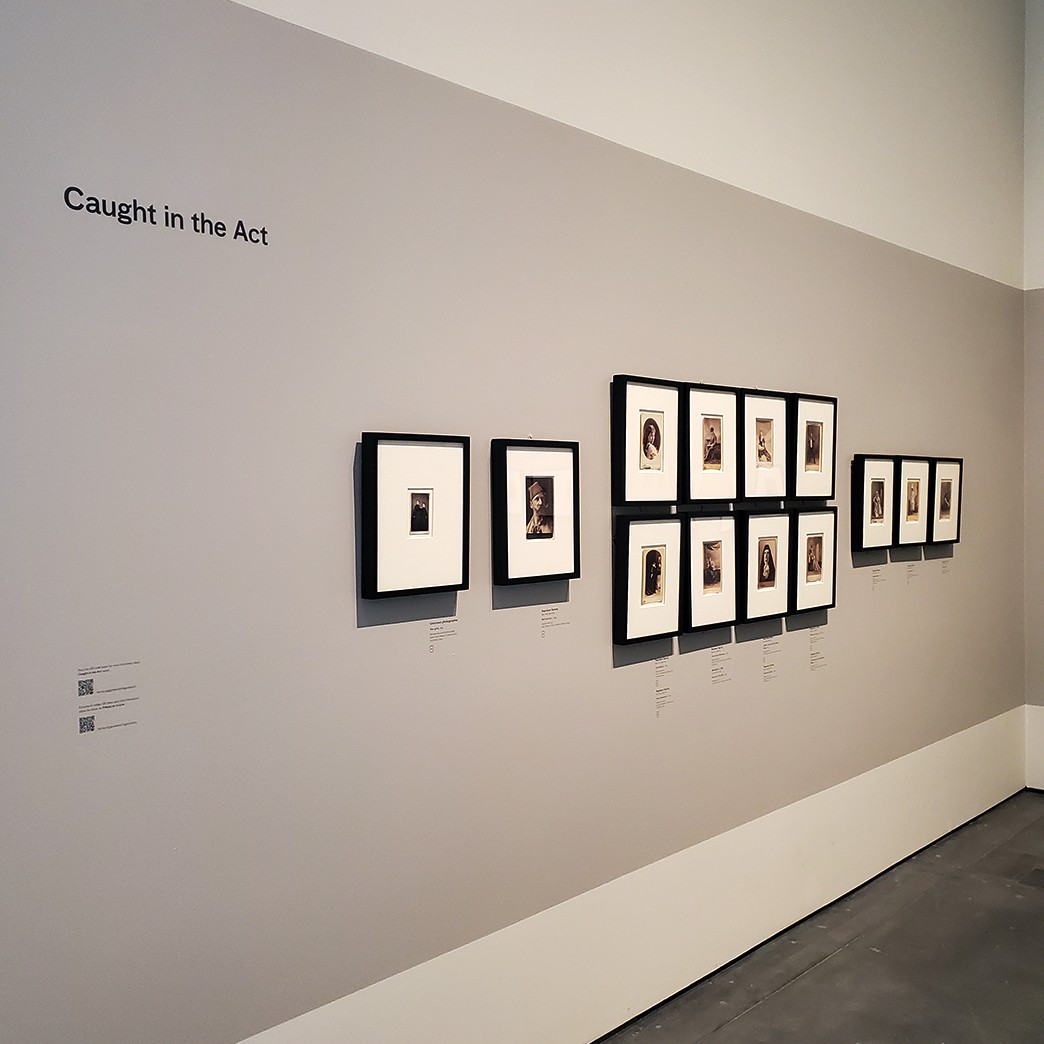
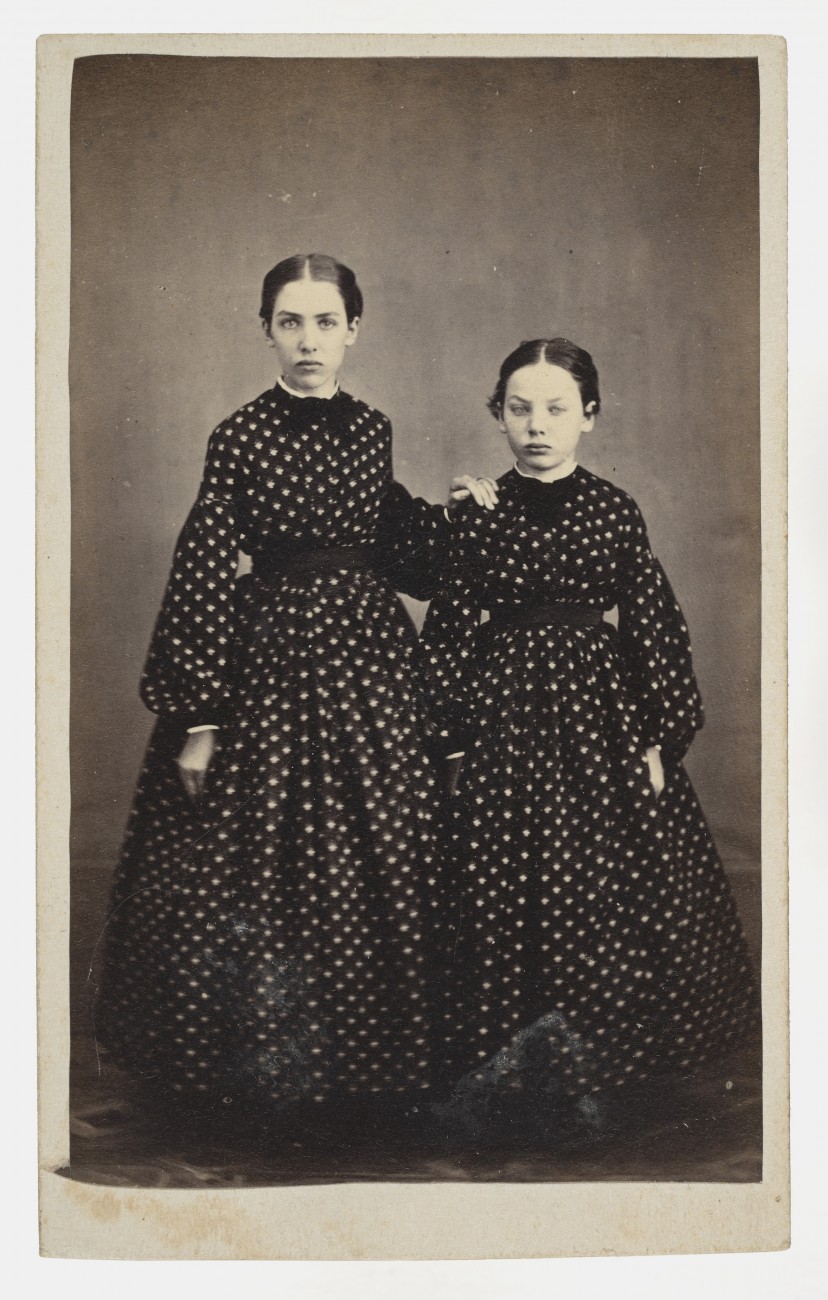
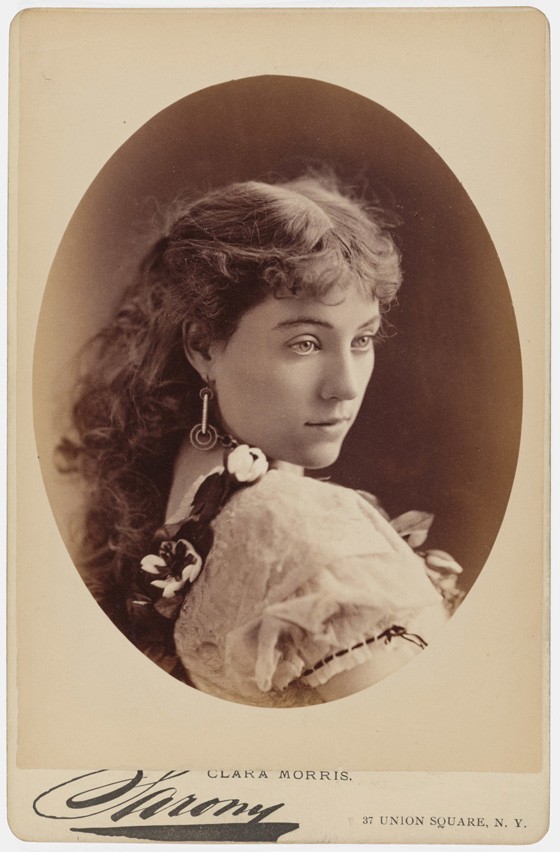
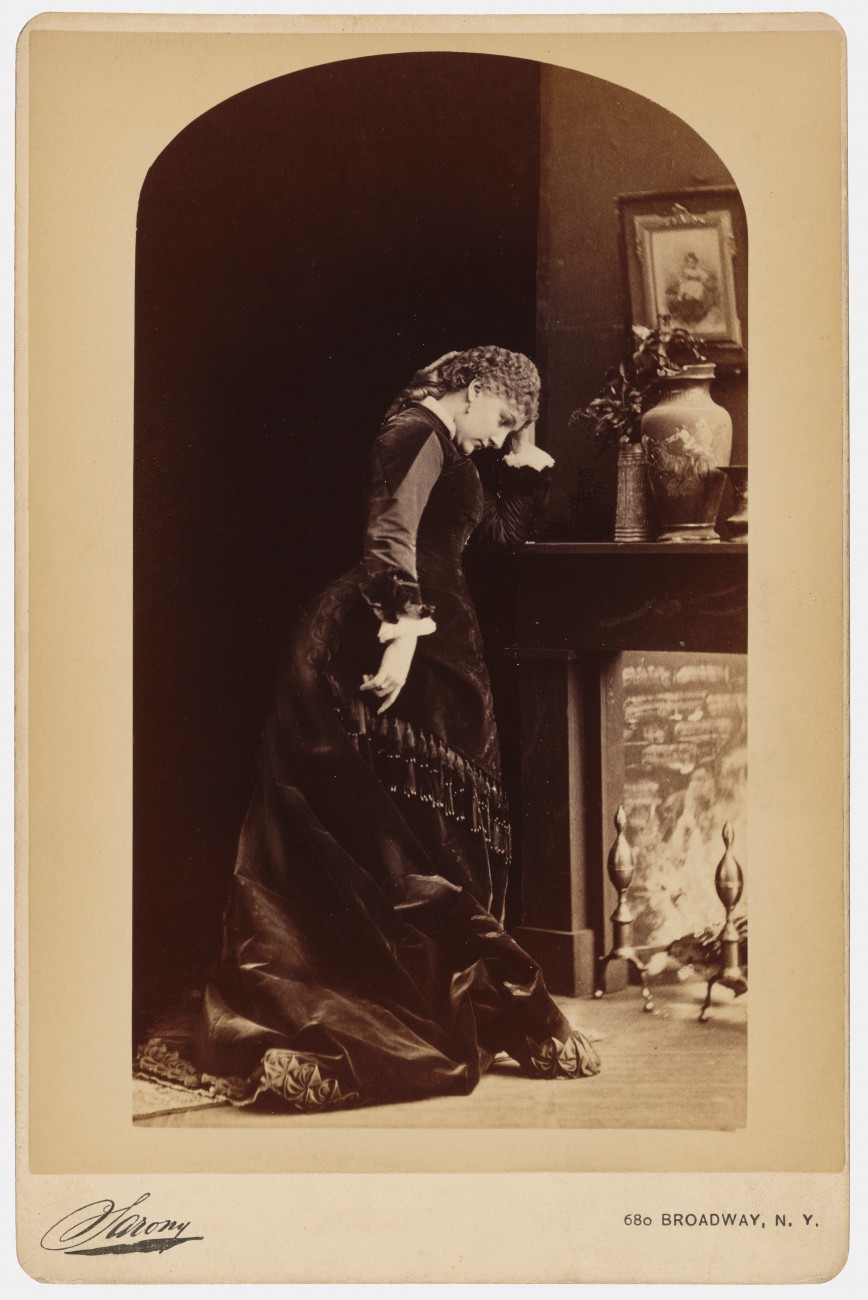
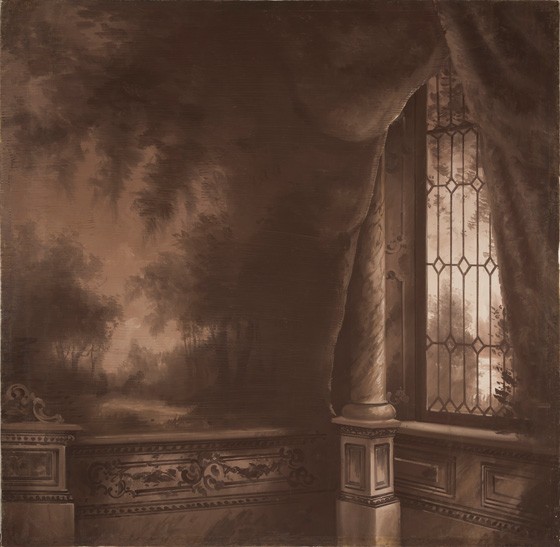
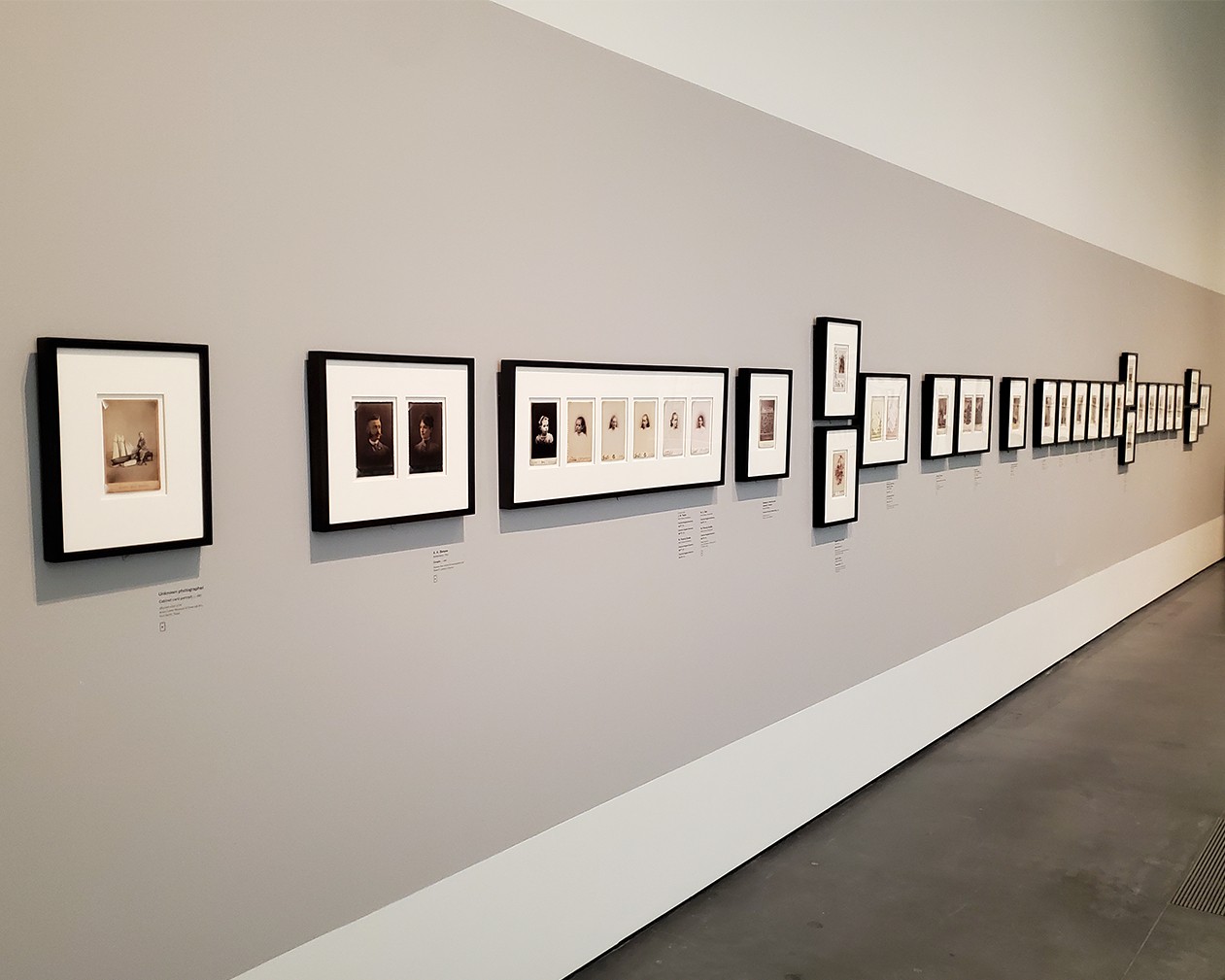
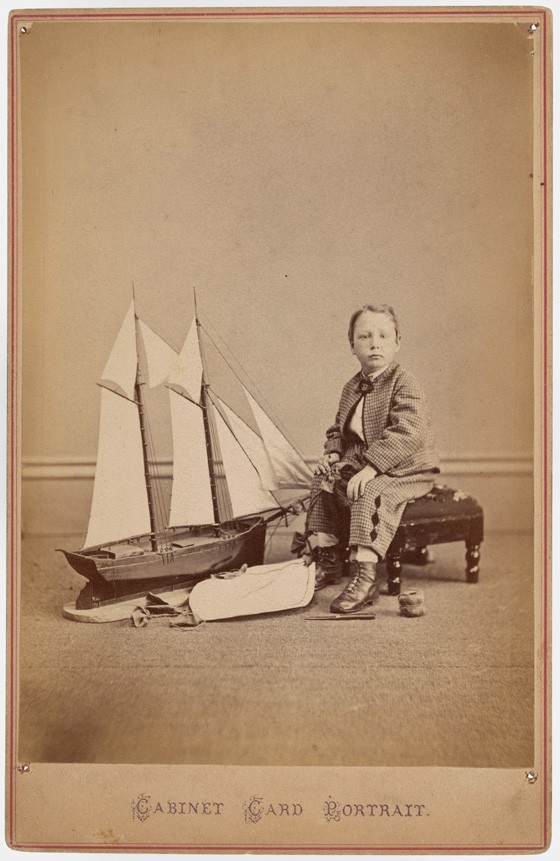
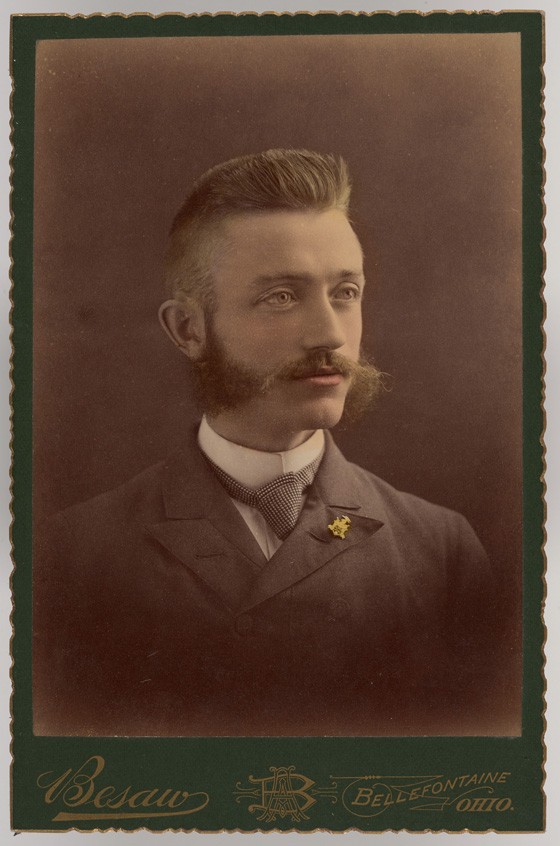
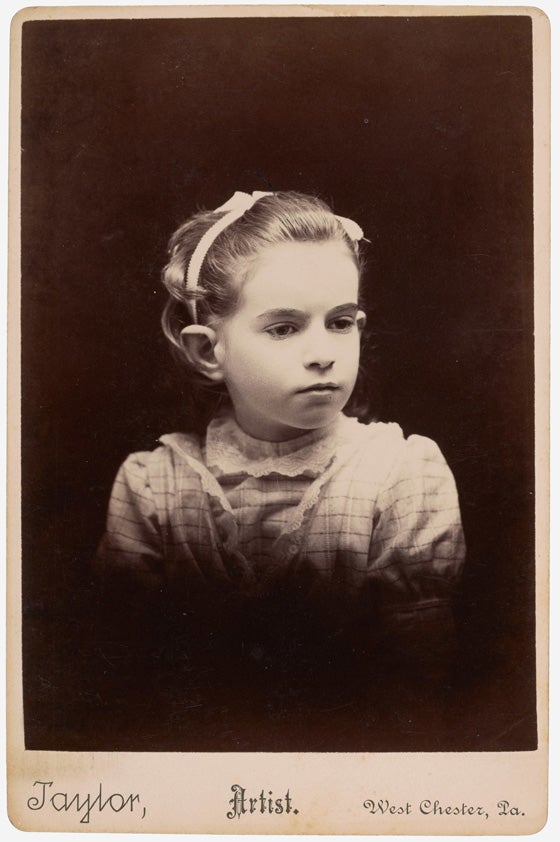
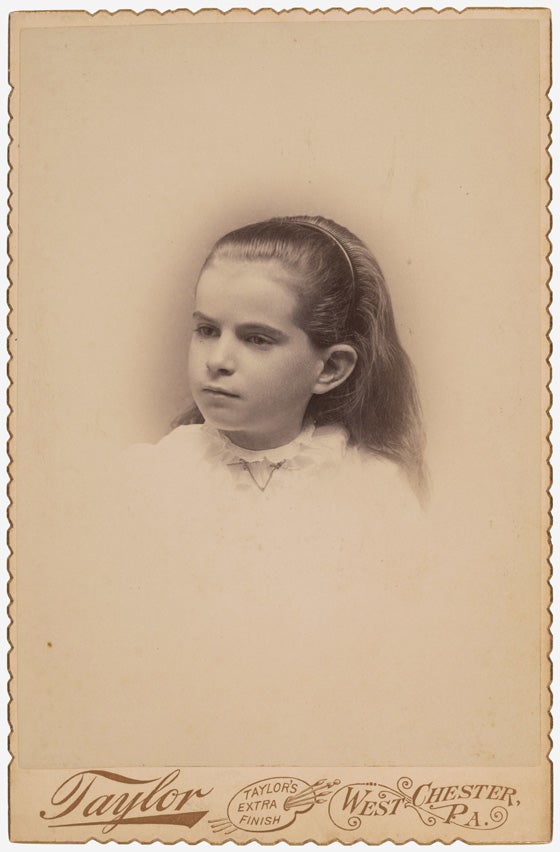
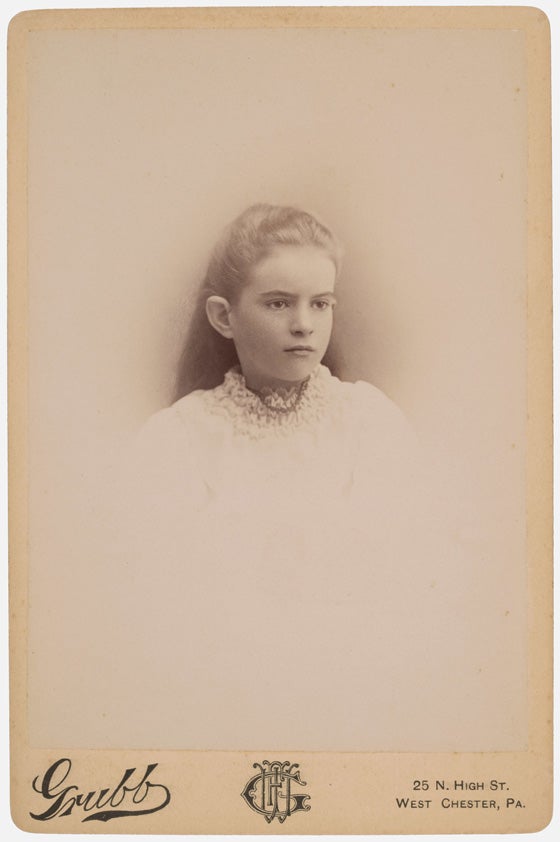
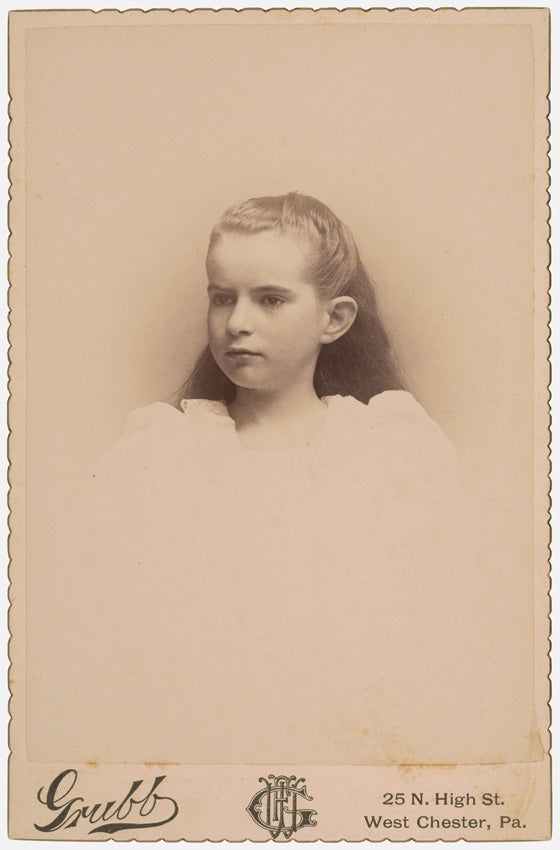
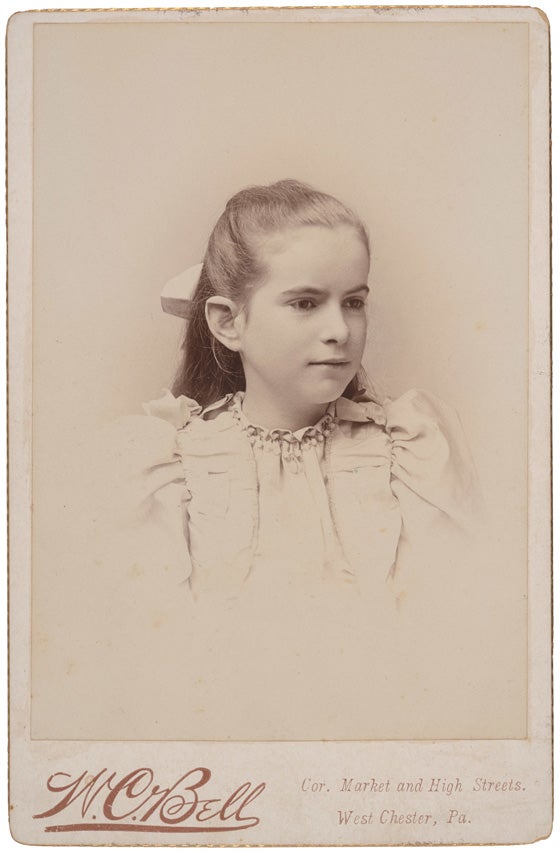
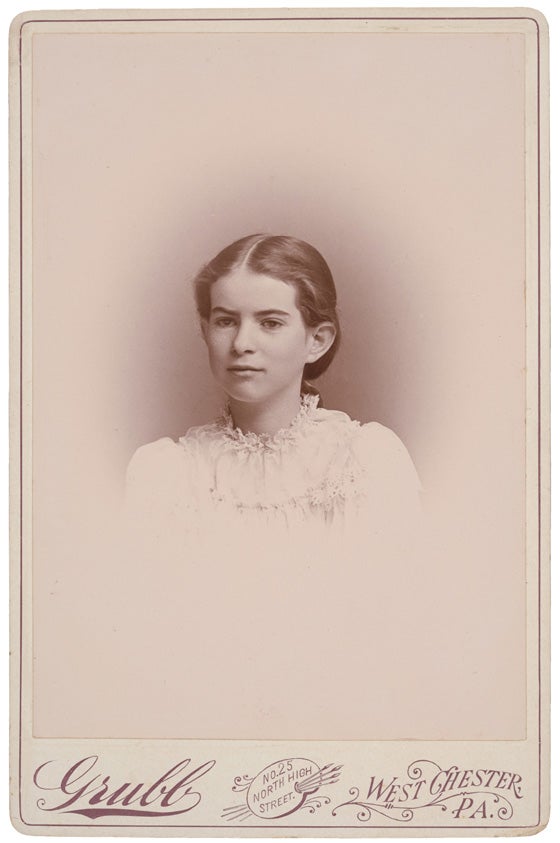
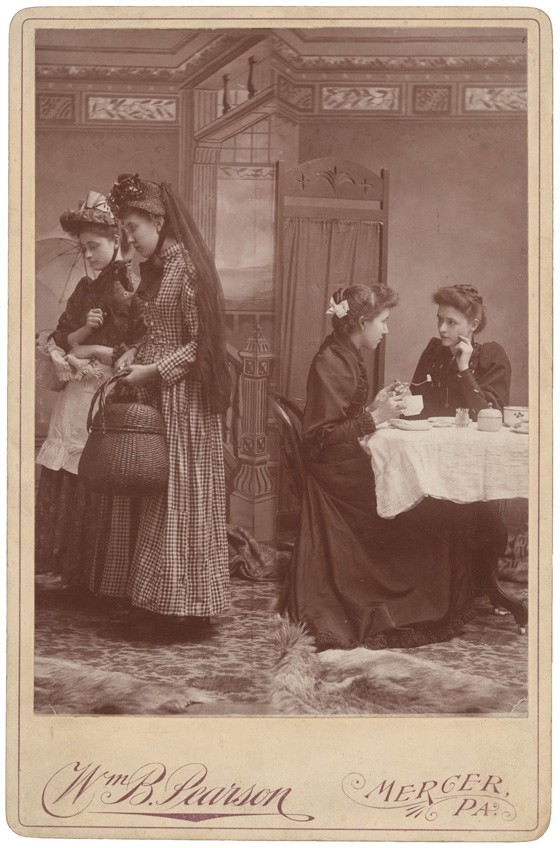
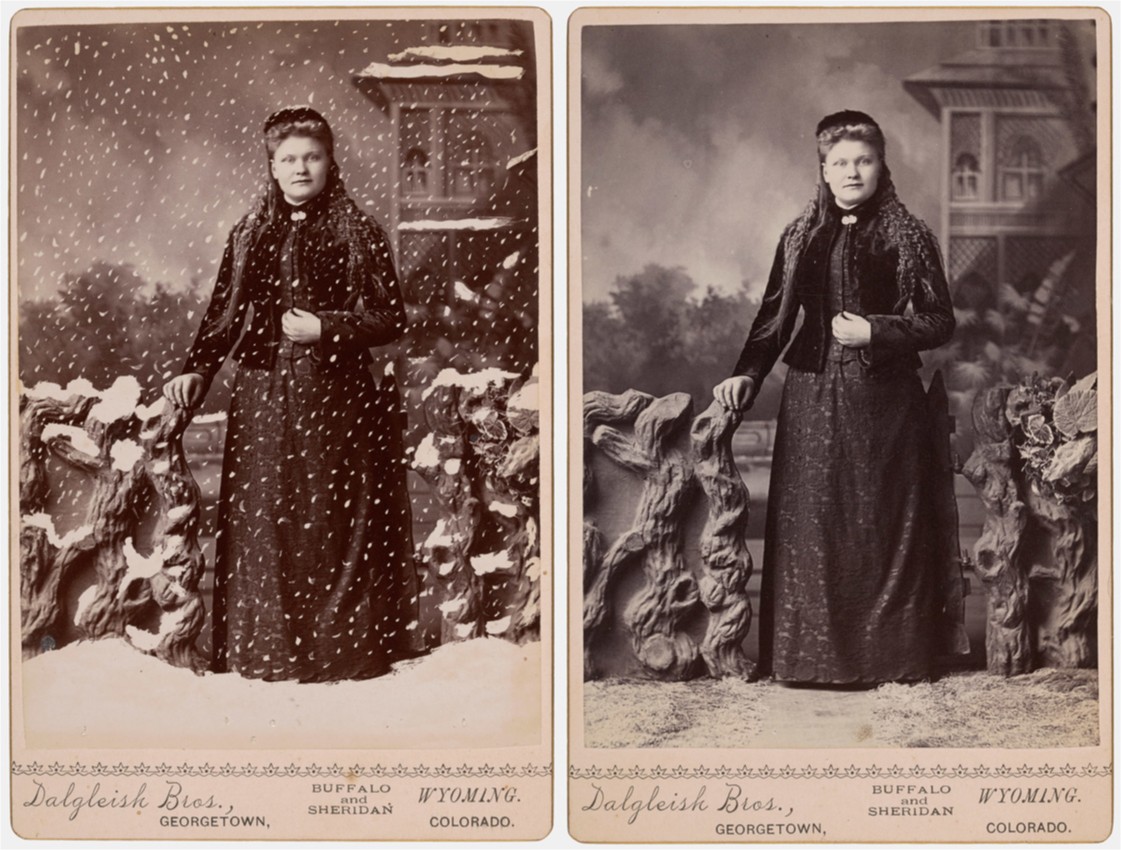
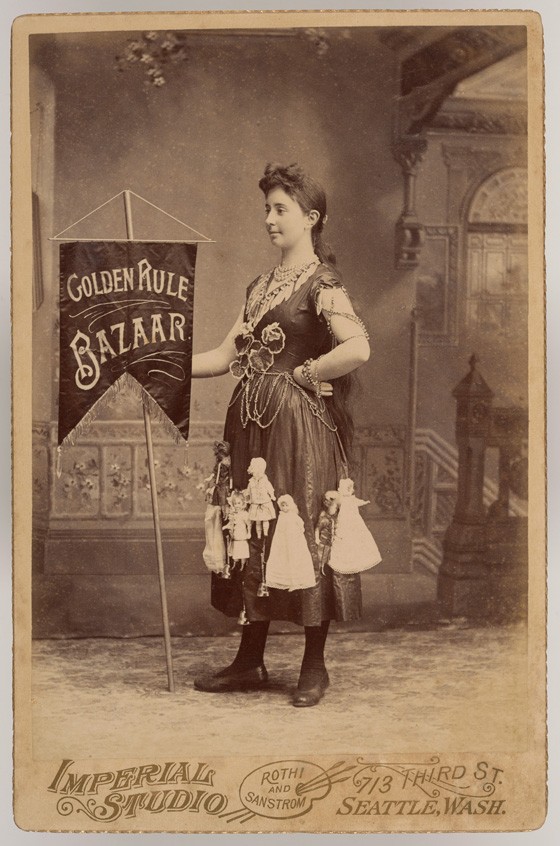
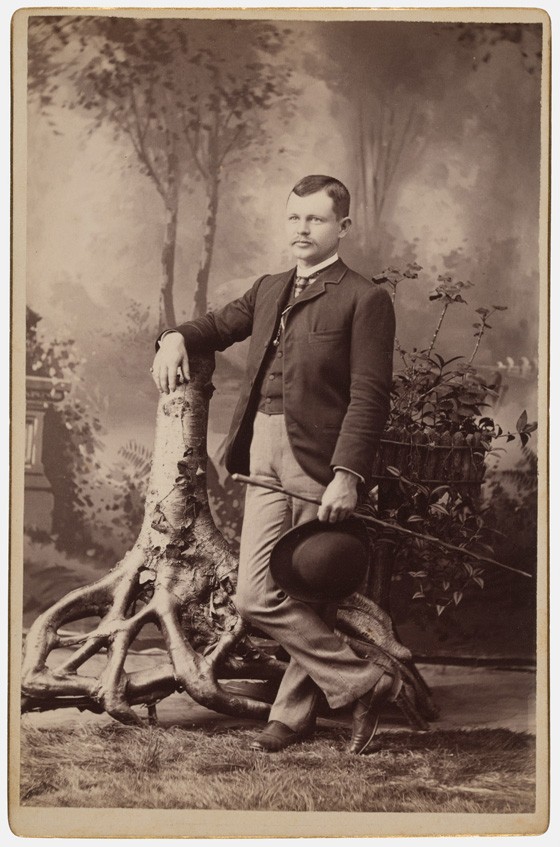
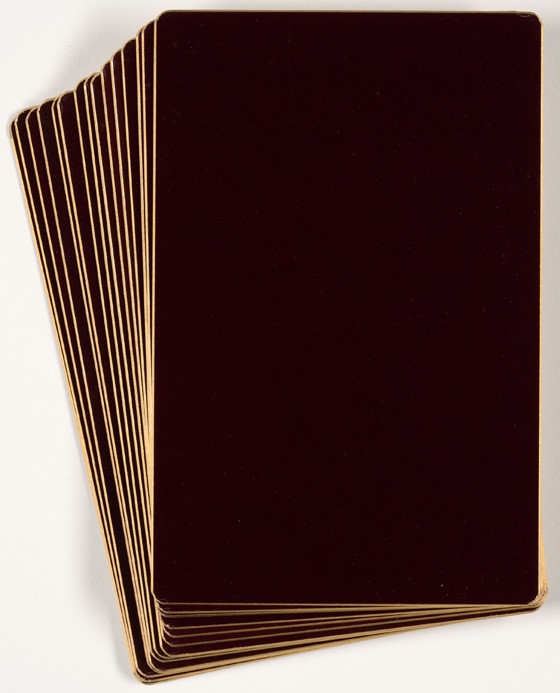
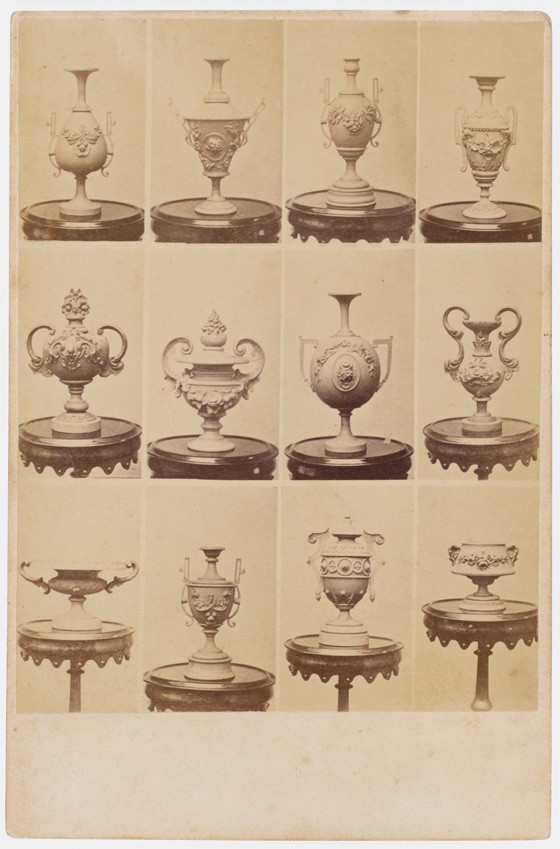
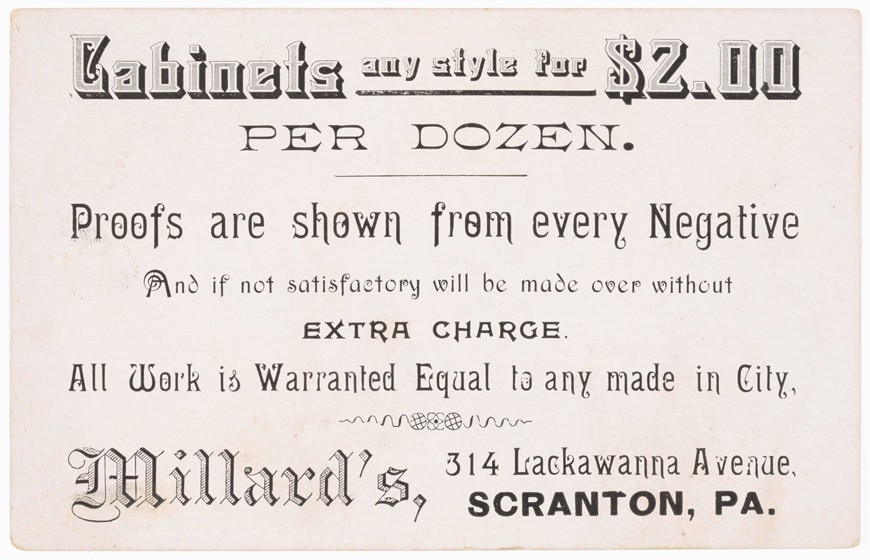
![Mrs. S. N. Likens, Police Matron from [Denver] Police Department, Christmas 1890, 1890](https://www-images.lacma.org/s3fs-public/styles/max_1300x1300/public/2021-08/P1981-10-63--70.jpg?itok=MEv7H-FX)
